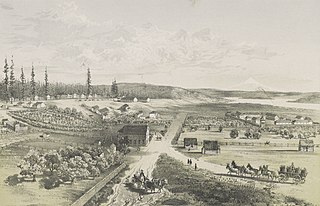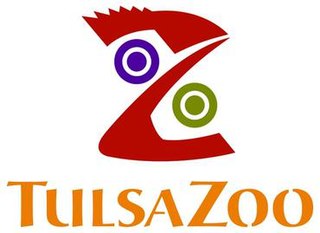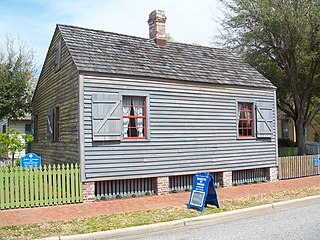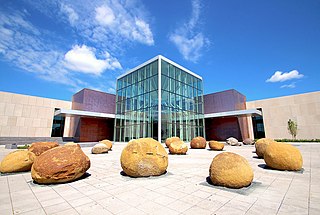
Stark County is a county in the U.S. state of North Dakota. As of the 2020 census, the population was 33,646, making it the 7th most populous county in North Dakota. and was estimated to be 33,001 in 2023. Its county seat is Dickinson.

Grand Forks is a city in and the county seat of Grand Forks County, North Dakota, United States. The city's population was 59,166 as of the 2020 census, making it the third-most populous city in the state, after Fargo and Bismarck. Grand Forks, along with its twin city of East Grand Forks, Minnesota, forms the center of the Grand Forks metropolitan statistical area, which is often called Greater Grand Forks or the Grand Cities.

Dickinson is a city in and the county seat of Stark County, North Dakota, United States. The population was 25,679 at the 2020 census, and was estimated to be 25,130 in 2023, making it the 7th most populous city in North Dakota.
The Melbourne Museum is a natural and cultural history museum located in the Carlton Gardens in Melbourne, Australia.

Dinosaur National Monument is an American national monument located on the southeast flank of the Uinta Mountains on the border between Colorado and Utah at the confluence of the Green and Yampa rivers. Although most of the monument area is in Moffat County, Colorado, the Dinosaur Quarry is located in Utah, north of the town of Jensen, Utah. The nearest Colorado town is Dinosaur while the nearest city is Vernal, Utah.

Wall Drug Store, often called simply Wall Drug, is a roadside attraction and tourist stop located in the town of Wall, South Dakota, adjacent to Badlands National Park. Wall Drug consists of a collection of cowboy-themed stores, including a drug store, gift shop, several restaurants, and various other stores, as well as an art gallery and an 80-foot brontosaurus sculpture. Unlike a traditional shopping mall, all the stores at Wall Drug operate under a single entity rather than being run individually. The New York Times has described Wall Drug as "a sprawling tourist attraction of international renown [that] draws some two million annual visitors to a remote town".

The Cincinnati Museum Center is a museum complex operating out of the Cincinnati Union Terminal in the Queensgate neighborhood of Cincinnati, Ohio. It houses museums, theater, a library, and a symphonic pipe organ, as well as special traveling exhibitions.

Fort Vancouver National Historic Site is a United States National Historic Site located in the states of Washington and Oregon. The National Historic Site consists of two units, one located on the site of Fort Vancouver in modern-day Vancouver, Washington; the other being the former residence of John McLoughlin in Oregon City, Oregon. The two sites were separately given national historic designation in the 1940s. The Fort Vancouver unit was designated a National Historic Site in 1961, and was combined with the McLoughlin House into a unit in 2003.

The Tulsa Zoo is an 84-acre (34 ha) zoo located in Tulsa, Oklahoma, United States. The Tulsa Zoo is owned by the City of Tulsa but since 2010 has been privately managed by Tulsa Zoo Management, Inc. The zoo is located in Mohawk Park, one of the largest municipal parks in the United States. The zoo is run as a non-profit.

COSI, officially the Center of Science and Industry, is a science museum and research center in Columbus, Ohio. COSI was opened to the public on 29 March 1964 and remained there for 35 years. In 1999, COSI was moved to a 30000 m2 facility, designed by Japanese architect Arata Isozaki along a bend in the Scioto River in the Franklinton neighborhood. COSI features more than 300 interactive exhibits throughout themed exhibition areas.

The Anchorage Museum is a large art, history, ethnography, ecology and science museum located in a modern building in the heart of Anchorage, Alaska. It is dedicated to studying and exploring the land, peoples, art and history of Alaska.

Badlands Dinosaur Museum in Dickinson, North Dakota, United States, reopened on May 17, 2016, after over twenty years operating as Dakota Dinosaur Museum. It is part of the museum complex at Dickinson Museum Center.

The Pensacola Historic District is a U.S. historic district located in Pensacola, Florida.

The National Capital Trolley Museum (NCTM) is a 501(c)(3) nonprofit organization that operates historic street cars, trolleys and trams for the public on a regular schedule. Located in Montgomery County, Maryland, the museum's primary mission is to preserve and interpret the history of the electric street and interurban railways of the National Capital region.
Dickinson Air Force Station is a closed United States Air Force General Surveillance Radar station. It is located 3.8 miles (6.1 km) northeast of Dickinson, North Dakota. It was closed in 1965.

The North Dakota Heritage Center & State Museum, located on the North Dakota State Capitol grounds in Bismarck, is the state of North Dakota's official history museum. The original building, which was opened in 1981, is operated by the State Historical Society of North Dakota and features permanent and temporary exhibits. In June 2008, the museum, which has been called a "Smithsonian on the plains", became home to a rare mummified Edmontosaurus with fossilized skin.
Historic preservation in New York is activity undertaken to conserve forests, buildings, ships, sacred burial grounds, water purity and other objects of cultural importance in New York in ways that allow them to communicate meaningfully about past practices, events, and people.

Central of Georgia Depot and Trainshed is a former passenger depot and trainshed constructed in 1860 by the Central of Georgia Railway (CofG) before the outbreak of the American Civil War. This pair of buildings was declared a National Historic Landmark in 1976, a listing that was expanded in 1978 to the old Central of Georgia Railway Savannah Shops and Terminal Facilities.

The National Czech & Slovak Museum & Library (NCSML) is a museum and library of Czech and Slovak history and culture located in Cedar Rapids, Iowa, in the United States. Established in 1974, the museum and library moved to its present site in 1983. The museum and library was severely affected by the Iowa flood of 2008. In 2012, rebuilding and expansion efforts were completed and the NCSML reopened. In 2018, the NCSML became a Smithsonian Affiliate, joining a network of museums, educational institutions, and cultural organizations that share Smithsonian resources. Dr. Cecilia Rokusek serves as the President & CEO of the museum since 2018.

The Ohio History Center is a history museum and research center in Columbus, Ohio. It is the primary museum for Ohio's history, and is the headquarters, offices, and library of the Ohio History Connection. The building also houses Ohio's state archives, also managed by the Ohio History Connection. The museum is located at the Ohio State Fairgrounds, site of the Ohio State Fair, and a short distance north of downtown. The history center opened in 1970 as the Ohio Historical Center, moving the museum from its former site by the Ohio State University. The building was designed by Ireland & Associates in the Brutalist style. It was listed on the National Register of Historic Places along with the Ohio Village in 2023.





















